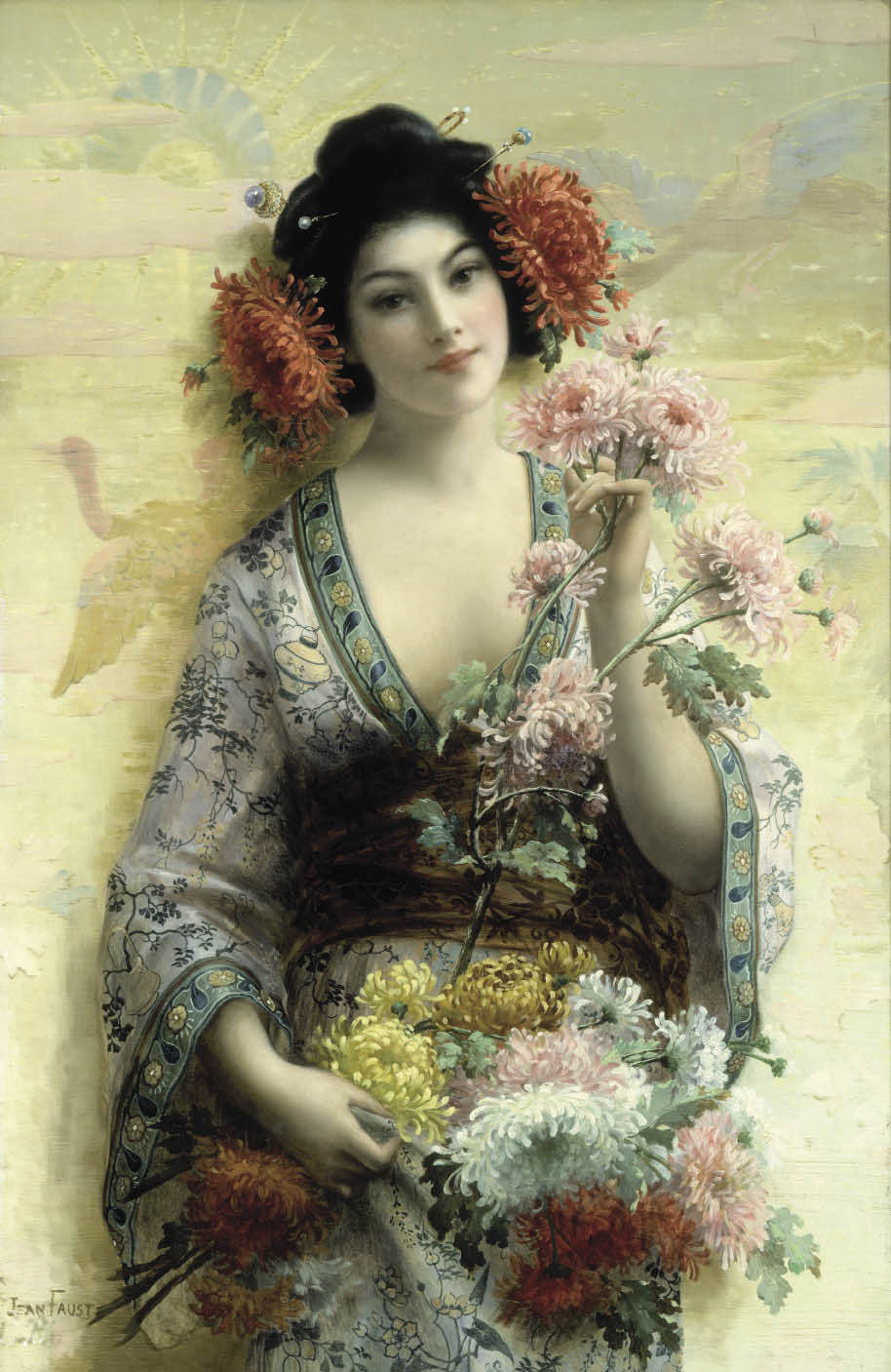Born in Japan, growing up in America in the Sixties, Yoko Kawaguchi was perplexed by the persistence of what she felt to be an anachronistic image of Japanese culture: the geisha. ‘That mincing, simpering personification of female subservience to the male infuriated me,’ she writes in the introduction to Butterfly’s Sisters.
Her book explores the Western portrayal of Japanese women with emphasis on the geisha, from the mid-19th century to the present day, comparing perception with reality, misunderstandings compounded by prejudice. She details the geisha’s appearance from head to toe (tortoiseshell hairpin to wooden-soled geta), and the life, from the market in virginity to retirement and/or violent death, encompassing history, myth, literature and art.
The geisha emerged as a discrete class within the ranks of prostitutes and courtesans, from the brothel quarters and tea-houses. One translation of the word is ‘performing artist’, and there are similarities with the hetaerae of ancient Greece. Geishas were expected to sing and dance and play an instrument to a high level of skill. Sex, sooner or later, usually formed part of the deal. Harsh financial arrangements underpinned the picturesque exterior of a geisha’s life — one of indentured labour, with the girls working endlessly to pay off a crippling debt: the sum paid to their families, added to the cost of their training and lavish costumes. A geisha who failed to earn enough to repay her debt might be sold on, along with the debt, to another geisha house.
We in the West were fascinated by the topsy-turvy world of The Mikado: in the 1880s a Japanese exhibition drew a million people to Knightsbridge; Japonisme inspired European fashion and décor, and infiltrated the works of Tissot, Monet, Degas, Toulouse-Lautrec and others.
The fascination was ambivalent: Baudelaire, Beerbohm, Wilde — everyone had a view, and expressed it forcibly. Many were breathtakingly racist: Rose Macaulay described the Japanese as ‘a little-known… repellent people, obviously, not good to marry into’. For Huysmans, Japanese woodblock artists captured the dual characteristics of woman: her elegant beauty and her insatiable appetites — a Hokusai woodblock of a naked abalone diver being pleasured by two octopuses provides an explicit illustration in Kawaguchi’s book.
The evolving image of the geisha reflected changing attitudes to women: the author takes five key moments in the past 150 years, as the geisha penetrated our cultural consciousness, to examine the ways in which this ambiguous figure served as a focus for western angst about female sexuality, and women’s role in society.
She quotes a 19th-century French writer who felt the unequal intellectuality between Japanese husbands and wives prevented the development of an ‘intimacy of mutual knowledge and common aspiration’. Unsurprising, then, that husbands went to teahouses to spend time with pretty, clever women, trained to entertain men. Basil Hall Chamberlain, author of Things Japanese, published in 1890, noted that the low esteem in which Japanese women were held resulted in their being treated like infants — indulged and protected, but prevented from maturing into independence.
The temporary ‘marriage’ between visiting Westerners and local women is familiar to us from Pierre Loti’s novel Madame Chrysanthème, through its various evolutions to the supreme example: Puccini’s opera Madame Butterfly. Kawaguchi provides a vivid chapter on the phenomenon. Elsewhere, the narrative occasionally gets bogged down in broad historical descriptions without particular relevance to the condition of geishas, or indeed women.
The book also considers depictions of Japanese life and women in movies — Teahouse of the August Moon, Sayonara, Cry for Happy and others. The Madame Butterfly prototype helped promote the idea of Japanese womanhood as caring and honest (and sympathetic to Americans). Shirley MacLaine could play Japanese without upsetting her fans. The geisha had become sanitised, offering traditional Japan without the dangerous ‘otherness’.
Kawaguchi expands her theme with examples of fiction — mainly from North America. The bestseller Memoirs of a Geisha gets a lot of space but Kazuo Ishiguro is nowhere in these pages, though his Pale View of the Hills surely deserves a place. Lafcadio Hearn spent 15 years in Japan and married a Japanese woman. His Glimpses of Unfamiliar Japan, which enlarged western understanding of the country, figures briefly, but his fiction gets no mention. No Ian Buruma, though he’s listed in the bibliography, and nothing of Donald Richie, whose novel Companions of the Holiday captured the elusive subtleties of the Japanese psyche. Richie brought tenderness as well as the objectivity of an outsider’s eye to his subject. Kawaguchi’s book might have benefited from a wider-angled lens.
Butterfly’s Sisters gives us an informed overview, but sometimes drifts away into historical byways and lengthy biographies of individuals. Overall, though, this is a book to savour for the light it casts on an aspect of Japan that for so long simultaneously attracted and repelled the West.
Lee Langley’s novel Butterfly’s Shadow is published by Chatto & Windus at £12.99.







Comments